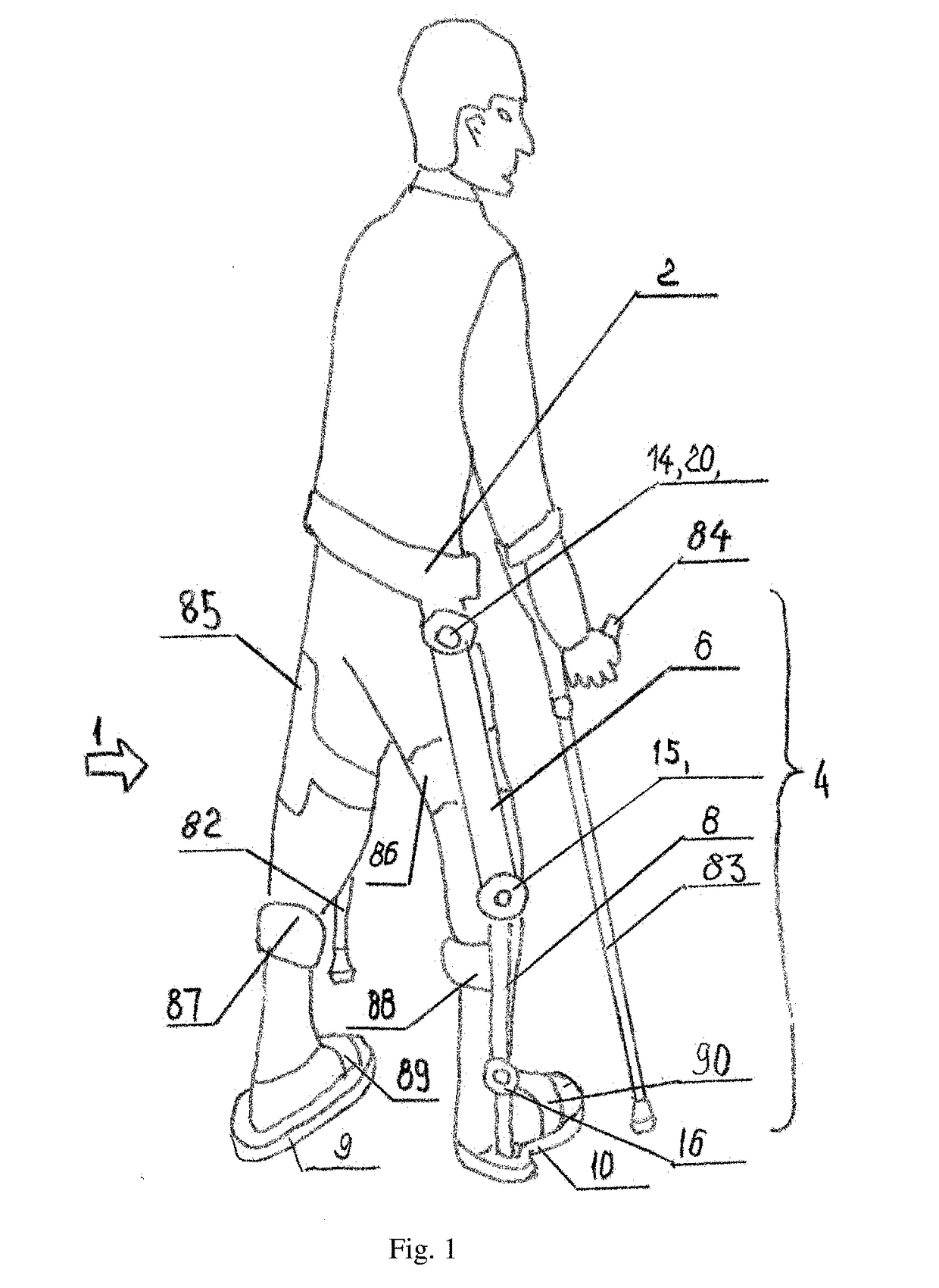Exoskeleton
a technology of exoskeleton and splint, which is applied in the field of medical equipment, can solve the problems of limiting the functional capabilities of the device, affecting the use of control methods by users, and affecting so as to improve the functional capabilities and improve the ergonomics of the devi
- Summary
- Abstract
- Description
- Claims
- Application Information
AI Technical Summary
Benefits of technology
Problems solved by technology
Method used
Image
Examples
Embodiment Construction
[0039]In FIG.1-9 the following is indicated:[0040]1—exoskeleton of lower limbs;[0041]2—pelvic section;[0042]3 and 4—respectively, left and right foot rests;[0043]5 and 6—respectively, left and right thigh sections;[0044]7 and 8—respectively, left and right shank sections;[0045]9 and 10—respectively, left and right foot steps;[0046]11—left hip pivot joint;[0047]12—left knee pivot joint;[0048]13—left ankle pivot joint;[0049]14—right hip pivot joint;[0050]15—right knee pivot joint;[0051]16—right ankle pivot joint;[0052]17—sensor of relative angle rotation of the left thigh section;[0053]18—sensor of relative angle rotation of the left shank section;[0054]19—second output of the unit 41 of desired trajectories generation in the Cartesian coordinate system;[0055]20—sensor of relative angle rotation of the right thigh section;[0056]21—sensor of relative angle rotation of the right shank section;[0057]22—third output of the unit 41 of desired trajectories generation in the Cartesian coordi...
PUM
 Login to View More
Login to View More Abstract
Description
Claims
Application Information
 Login to View More
Login to View More - R&D
- Intellectual Property
- Life Sciences
- Materials
- Tech Scout
- Unparalleled Data Quality
- Higher Quality Content
- 60% Fewer Hallucinations
Browse by: Latest US Patents, China's latest patents, Technical Efficacy Thesaurus, Application Domain, Technology Topic, Popular Technical Reports.
© 2025 PatSnap. All rights reserved.Legal|Privacy policy|Modern Slavery Act Transparency Statement|Sitemap|About US| Contact US: help@patsnap.com



